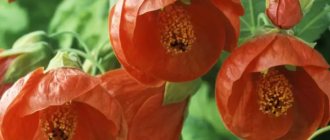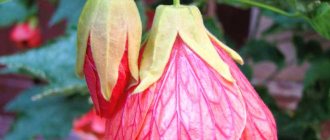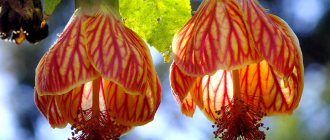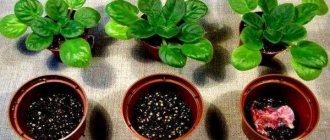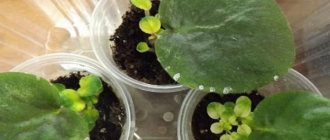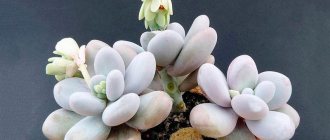Abutilon, or indoor maple, is very popular among indoor floriculture lovers and gardeners.
The plant got its name because of its leaves, which are shaped like maple leaves. The malvaceae family, to which abutilon belongs, has more than 200 species. Abutilon Bellevue is a varietal mix, hybrid varieties of many varieties, united by common characteristics.
What does abutilone look like?
Among domestic and other flower growers, abutilon (indoor maple) has become widespread as a perennial tree and shrub.
This form of indoor maple is distinguished by large leaves, as well as drooping lantern inflorescences, which are decorated with long pedicels. Already in the first weeks of spring, abutilon pleases with flowers that begin to fade only in late autumn. Among all the variety of abutilon, there are varieties that bloom constantly. They may vary in the color of the leaves, which may be green, mottled or variegated. Peduncles containing long stamens and a pistil also look original: they can be white, orange, pink, red, gold and burgundy. Also, plants can differ in the shape of the flower, on the basis of which simple and double types of abutilone are distinguished.
Psychologists are also familiar with this plant and consider it a unique plant. According to them, growing abutilone is useful for people who often experience depression. First of all, positive changes from his presence will be felt by people whose work takes place in the office and involves stressful situations. Almost every one of us can feel the calming effect, which primarily manifests itself at the flowering stage of abutilone. At the moment, scientists have not been able to understand what causes this, but most experienced gardeners have seen for themselves the effect of abutilone.
General information
The plant is famous for its leaf shape, due to which it is called an indoor maple, and due to the shape of its buds - a Chinese lantern. Rope, fiber for burlap, and material for making wickerwork are obtained from the stems of abutilon, which is why another name for it is rope. But most often abutilone is called Indian mallow due to its relationship with this flower.
There are many different forms and hybrids of this wonderful plant, but the variety with a small stem and large flowers is most often grown. It's called Bella. This plant fits perfectly into any interior and complements the garden. In most countries, rope grass is grown as an agricultural crop, but there are varieties that are used only for decorative purposes.
Reproduction
The method of propagation directly depends on the plant variety. Variegated species reproduce by cuttings, non-variegated species by seeds.
The seeds of the plant are sown in the soil in early spring. Greenhouse conditions are provided for the container, maintaining a temperature of 18 degrees. In this case, it is necessary to ensure regular ventilation and spraying. Under favorable conditions, seedlings will appear already in the 3rd week.
When propagating in another way, cuttings from young shoots are used. They are kept in water until small roots appear, or immediately placed in the soil, while ensuring constant watering. For seedlings, it is necessary to maintain a temperature of no higher than 23 degrees. Rooting occurs in a month.
Despite its sophistication, the flower does not require too much attention. Perhaps that is why it is a “favorite” of both experienced florists and novice gardeners.
Types of abutilone
Hybrid and ornamental varieties of crops, represented by compact bushes, trees or herbaceous plants, are suitable for indoor keeping.
The leaf blades are large (up to 10 cm), carved, flexible, delicate, reminiscent of maple greens. They have an emerald, heterogeneous or spotted color.
The inflorescences are located on long stalks. The shape of the buds resembles bells. Depending on the variety, they can be scarlet, straw, lemon, carrot, snow-white and flamingo shade with numerous stamens.
The most popular types of indoor maple (photo below) are:
- Abutilon Juliet. In 12 months it becomes 50 cm taller, unpretentious to the conditions of detention. Bright flowers reach 6 cm in diameter. By growing from seeds, you can get buds of the most unexpected and bright colors.
- Abutilon Bella. It is a compact branched bush (up to 40 cm in height). Bright bell-shaped flowers reach 7 cm in diameter. Does not require regular pruning and pinching, blooms all year round.
- Grape leaf abutilone. The shrub grows up to 2.4 m, the shoots are softly pubescent, the leaves are deeply serrated, velvety, up to 15 cm long. The buds are on oblong stalks, collected in tassels of 3-4 pieces. The corolla changes shape from broadly bell-shaped to almost round. The flowers are a mixture of azure and lavender, with veins of deeper color in some cases. It begins to bloom in late spring.
- Abutilone megapotamian. The carmine-scarlet base of the corolla of wedge-shaped petals earned it the name “Chinese lantern.” It is often grown as a hanging crop that needs to be tied to a separate support. The leaves are oblong with serrations along the perimeter, rich green or emerald in color. The inflorescences are single, the petals are colored lemon, orange or purple. If you provide the necessary microclimate and follow all the rules of care, it blooms all year round.
- Abutilon Organza. An evergreen subshrub that grows up to 60 cm. In an adult plant, the central shoot becomes woody, the side branches remain flexible, thin, and pliable. The leaves reach 10 cm, have a rich green tint with light, clearly defined veins. The flowers are slightly drooping, up to 7 cm in diameter. They can be golden, pink, orange, snow-white in color of varying degrees of intensity.
- Abutilon Hybrid is a large group of varieties, which includes shrubs and subshrubs, up to 1.5 m high. The leaves, shaped like a heart or a chicken egg, are strewn with hard fibers on both sides. The flowers are bell-shaped, arranged singly or in pairs. The palette varies from snow-white to rich burgundy.
For reference! Theophrastus abutilon (rope plant) is especially valued by the inhabitants of the Middle Kingdom and is grown as an important agricultural crop.
It is used to make durable fiber used for technical needs. You may be interested in: Why doesn't hydrangea bloom, what to do? Hydrangea is considered a perennial plant. Many gardeners and gardeners love it very much. There are more than 70 species...Read more...
How to cut abutilone?
At home, abutilon develops very quickly and during the growing season, which lasts from spring to late autumn, produces young shoots of considerable length. Therefore, in potted culture, abutilons must be trimmed, helping the crown to bush and remain compact. In addition, the formation promotes lush flowering, because buds appear only on young shoots.
On this topic:
BACK
FORWARD
1 of 2
Pruning is carried out in spring and late summer, when the main wave of abutilon flowering ends. At the same time, not only weak and damaged shoots are removed, but also at least a third of the length is cut off from strong branches. The resulting cuttings, which have at least 2-3 internodes, should not be thrown away, because this is the best planting material.
It is enough to free the cuttings of abutilone from the lower tiers of leaves, remaining buds and flowers, and then place them in water and cover the container with a bag. After just a few days at temperatures above 22 °C, you can notice a thickening and the beginnings of thin white roots appearing at the end of the stem.
To protect the plant from rotting, you can put an activated carbon tablet or several crushed pieces of charcoal into the water.
The formation of roots ranging from 3 to 7 cm in length means that abutilon can be transplanted to a permanent location. For a young abutilon flower, a pot with a diameter of about 7 cm is enough. A powerful drainage must be made at the bottom, on top of which a small layer of soil is poured and the seedling is carefully transferred into it.
Sprinkle the sprout with a damp substrate very carefully, since the abutilon roots are fragile and can break off. For the same reason, it is better not to specifically compact the soil after replanting. Rooting and acclimatization of abutilon cuttings takes place within a few weeks, as evidenced by the appearance of young leaves
It is good if during this time the plant is in a greenhouse or covered with a bag that creates a constant microclimate.
In three or four weeks, the cuttings take root; shortly after cutting, they are planted in a moist substrate of peat and vermiculite. After a month in the greenhouse, such plants can also be transplanted into individual pots. As a rule, young seedlings bloom actively after a few months, and after the end of the growing season they can already become a source for subsequent abutilon cuttings.
Preparing for landing
Before considering the rules of transplantation, it is necessary to choose the right container for the ropeway and determine what kind of land is needed. When choosing a pot or other container for planting a flower, you must remember that the flower is replanted annually.
And since the flower grows quite quickly and the roots also develop rapidly, the container where the flower will grow must be deep enough. For young cuttings, choose a pot or flowerpot whose diameter varies between 7–10 cm.
Find out how to properly plant indoor flowers in a pot.
The rope plant prefers non-acidic, airy soil.
You can prepare the desired mixture at home using:
- 1 part humus;
- 2 parts of turf land;
- 1 part leaf soil;
- 0.5 parts sand.
You can also use ready-made soil, for example, “Palma”, which is sold in any flower shop.
Common varieties
Abutilone
The most common varieties that are usually grown at home are:
1
Abutilon vitifolium. The plant variety is presented in the form of a bush that can grow up to one and a half meters in height. The main difference between the vitifolium variety is its large lobed leaves.
During the flowering period, flowers are formed on the crop, collected in panicles, which are located on long stalks. They can be up to 15 cm in diameter. They have a beautiful lilac-blue hue. You can notice a slight edge on the shoots. With proper care and maintenance, grapevine abutilon begins to bloom in May.
Abutilon vitifolium
2
Abutilone striped. Indoor maple, the photo of which shows that its main feature is its unique color. Sometimes the name “painted” is attributed to the spotted variety. The Latin name is “striatum”. The indoor plant has soft and thin shoots. Leaf blades with spots are located on long petioles.
The foliage is heart-shaped. The surface of the leaf blade is green, distinguished by pale uneven coloring located along the edges. At the end of summer, the crop begins to bloom with bright yellow flowers, which are shaped like bells. The red corolla is pronounced, much longer than the calyx.
Abutilone striped
3
Abutilone megapotamian. Often this variety is also called “Amazonian”. It is a bush with long shoots. The leaf blades are oval in shape with serrated edges. During the flowering period, single flowers are formed on the plant, located on pedicels. Their shape resembles lanterns.
Up to 30-50 of them can form on one bush, depending on the age of the plant. The main difference is the bright red tubular calyx. As for the corolla, it is colored yellowish and also has a wedge-shaped shape. If an indoor maple tree is provided with all the necessary conditions for growing, then it can bloom throughout the year.
Abutilone megapotamian
4
Abutilone Darwin (darwinii, hildenbrandii). This is a very low shrub, reaching a height of no more than 1 m. Outwardly similar to abutilon pictum. The plant bears large, three-lobed terry leaf blades with slight pubescence on a thin stem.
During the flowering period, the indoor maple produces flowers of a bright orange hue. The petals have red veins. In indoor conditions, flowering lasts from April to September.
Abutilone Darwin (darwinii, hildenbrandii)
5
Abutilone hybrid. This variety was obtained by crossing abutilon variegated and abutilon Darwin. The plant is characterized by white, golden and burgundy flowers. Their shade will depend on the specific species. The leaf blades are bright green and have carved tips.
Abutilone hybrid
6
Abutilon sello (sellowianum). Popularly, this variety is often called grandma's abutilone. It is the most common among other types of indoor maple. In just one summer, a cutting 10 cm long can turn into a meter-long shrub or tree.
This culture feels great when grown indoors. The plant can bloom throughout the year.
Abutilon sello (sellowianum)
On the windowsills of gardeners you can also find other varieties, for example, Bella hybrid, Juliet, Bellevue, organza, Marmoratum. All of them have the same bright flowers, ranging from yellow to pink, which will become a real decoration in the room.
Indoor asparagus: types, care rules and methods of propagation at home, benefits and harms | (50+ Photos & Videos) + Reviews
Signs and superstitions
Esotericists believe that the plant is able to attract solar energy and give it to others. A flower located in a living room can relieve despondency, depression and drowsiness. Abutilone restores psychological balance and improves mood.
It is useful to place a flower in office premises, as it makes people kinder and more attentive to each other, helps to establish communication and evoke sympathy among others.
Indoor maple promotes communication between people. During the flowering period, everyone can feel its calming properties. It helps to awaken creativity and imagination, as well as bring plans to life.
Abutilone absorbs negative Sha energy and fills the home with solar energy. The plant should be placed on cabinets and high shelves, since the ampelous shape of the rope plant with long stems hanging down smooths out sharp corners that accumulate negative energy.
The most common types of abutilone
This flower is quite diverse, because it includes many interesting varieties that can become a worthy decoration in the house.
Abutilon Sello
A characteristic feature of this hybrid variety is the presence of striped leaves. The domestic maple has a weakly branched stem, which produces straight, slightly hairy shoots. The leaves have three elongated lobes with a pointed tip.
This variety is decorated with light purple flowers with pink veins. The flowering time begins in mid-summer and continues until the first frost. When favorable conditions are created, plants can reach 2 m in height.
Abutilone hybrid
This is one of the brightest representatives of American hybrids, which includes many varieties. Most often it grows in the form of an evergreen shrub with brownish bark. The leaves have an unusual appearance, often three-lobed or five-lobed. Pubescence is present not only on the leaves, but also on the flowers, which are shaped like a bell. They are held on petioles reaching a length of 12 cm. Their shade is quite varied, which can be white, red, golden or burgundy. The largest specimens can grow up to 1.5 m.
Abutilone Darwin
Despite the fact that this variety has pronounced decorative properties, it is not so often found in the apartments of flower growers. During the growing season, this species produces large three-lobed leaves, which are supported on long petioles located on silky, pubescent shoots that grow up to 1 m in length. The leaves located in the lower part of the stem can have a seven-lobed shape. The blade located in the middle is usually very elongated. The flowers are bell-shaped, orange with red veins. No more than 3 inflorescences can grow from one axil. This variety of abutilon begins to bloom in the first weeks of April, and the inflorescences wilt at the end of September.
Abutilon Juliet
This variety stands out from others due to its high unpretentiousness. It is also of interest due to its rapid growth, since it can add up to 5 cm per season. Abutilon Juliet is ideal for growing indoors due to its undemanding nature in terms of lighting, and its flowers last throughout the year. The flowers are quite large, reaching a diameter of approximately 6 cm. When growing this variety by sowing seeds, the first flowers can only be expected after 5 months.
Conditions required for indoor maple
The tropical guest abutilon has firmly established itself in the home collections of Russian flower growers. As experts on this plant say, any spacious window sill with a lot of sun is a suitable place for a home maple tree. Plus it requires plenty of hydration and nutrition.
Table: conditions for indoor maple depending on the season (spring-summer/autumn-winter)
| Season | Lighting | Humidity | Content temperature |
| Spring Summer | Abutilone is light-loving, but it needs to be shaded from bright sunlight. With the onset of warm days, it is best to take the tub with the plant out onto the balcony or place it in the garden in a semi-shaded place. In the room, the ideal option would be to be located near a window with an east or west orientation. | Humidity is not critical. In hot weather, daily spraying with warm water can be done. | +22–25 °C |
| Autumn winter | A very bright place is required, since in winter the plant suffers from a lack of sunlight. A window facing south is perfect. It is also necessary to supplement the abutilon with fluorescent lamps. | Spraying is required when the indoor air is too dry. If the temperature is less than +18°C, the procedure should be stopped completely. | +14–16 °C |
Types of abutilone
Abutilon is a shrub or small tree, actively growing, with large soft palmate leaves of a uniform grass color and very beautiful flowers. The flowers consist of five petals, white, pink, yellow, orange or red. Their texture is attractive - the flowers are very elegant, with well-defined veins along the surface of the petals. They evoke associations with organza, velvet, silk and butterfly wings. The texture is reminiscent of hibiscus flowers.
There are more than hundreds of plant species; hybrid abutilon is grown most often in rooms. Today this is a huge class of a wide variety of abutilons, from vigorous-growing ones (the Feuerwerk variety, up to 100 cm high) to miniature ones (like the Christmas abutilon, up to 30 cm high), with flowers of various shades, nuances of texture, including multitonal ones.
For your information!
For example, the variety "Giant Lilac Vine" has wide-open, very light pink flowers with bright condensation towards the edges and contrasting venation. There are purple markings over the entire surface of the flower. The color is complex, watercolor. And abutilon “Silver Bells” is covered with pristine white flowers with a lush yellow core, and is distinguished by its ultra-compact size (only 25 cm). Both plants give a completely different impression.
Other most famous indoor species:
- Abutilone Bella. This is a popular hybrid mixture from the Russian Vegetable Garden brand. Packaging of seeds 5 pcs. will cost 45 rubles. and will allow you to get plants of different colors: white, pink, tangerine, carmine. The plant has an average height of up to 45 cm and large flowers up to 7 cm in diameter. The bushes are smooth, well branched. The variety attracts with beautifully shaped bushes and flower sizes.
- Abutilone organza. These are seeds from. Pack of 10 pcs. will cost 20 rubles. The seeds are praised for their high germination rate. This hybrid has delicate, pastel colored flowers.
- Abutilone grape leaf (blue). In nature it is a shrub up to 2.5 m in height. The leaves are large, slightly pubescent, palmate, the size of the palm of an adult. The flowers are smaller than those of hybrid varieties. The color is touching and delicate - blue with a lavender tint. The degree of color intensity depends on growing conditions and can vary from faint to bright.
- Abutilone megapotamian. Has the most original flowers. They look like bright red lanterns with yellow tongues. The unusual impression is completed by very long, hairy stamens of a dark purple color. The shoots of the plant are long and graceful. The only species that requires partial shade.
- Abutilon painted. Its goblet-shaped flowers have delicate colors, very often with pronounced veining. The leaves are either green, but more often variegated.
- Corinabutylone Oxena. The flowers are wide open, reminiscent of Malva flowers (recalling that any abutilone belongs specifically to the Malvaceae family). They are painted lavender. The plant is large, up to 1.5 meters, the shoots are whimsically curved, the leaves are up to 7 cm, openwork.
- Corinabutylone Santensa. New. Hybrid of grapeleaf and Oxene. Outwardly, it differs little from corinabutylone Oksena, however, it has a number of advantages: it is more winter-hardy and blooms profusely. The bushes of the plant are very lush, branch well, the greenery is rich, bright, dense, and the flowering is very abundant and long-lasting. The flowers are large and can be painted in different tones, striking with their watercolor delicacy.
Almost all types of abutilons can be grown indoors. However, there are varieties that feel better in garden tubs - in them they show themselves in full force. These are tall, fast-growing and profusely flowering varieties: megapotamian, painted, grape-leaved, all varieties of corinabutylones - this group, in general, is characterized by increased frost resistance and feels great in open ground.
Interesting!
In greenhouse conditions, many types of abutilons can delight with continuous flowering. The secret of success: coolness + plenty of light.
Acquaintance
The genus of domestic maple belongs to the malvaceae family. It grows naturally in the tropics and subtropics, where it is warm and humid. There it grows in the form of bushes, small trees or perennial grass and has more than 100 species.
Abutilon is the closest relative of indoor hibiscus and mallow.
Abutilon is also called house maple or indoor maple because its leaves are very similar to maple leaves. They have a blade shape, are very flexible and delicate, the edges have small teeth. In India, it is known as rope because its coarse fiber is used to make ropes and also weave various products.
Abutilon flower is a very famous, popular, unpretentious plant that is successfully grown all over the world. It is valued for its rapid growth and spectacular flowering. In good growing conditions, the shrub reaches two meters in height and blooms generously, as seen in the photo, possibly throughout the year.
Features of watering when caring for abutilone
Abutilones are readily “drinked” at home, which is especially noticeable on hot summer days, as well as in the warm, dry air of a room where heating is on. Delayed watering during the active growing season necessarily leads to wilting of the foliage, and in some cases even to the loss of buds and death of the peripheral root system. The plant should not dry out. And the optimal time is considered to be the interval between waterings, when the soil surface dries out a little.
However, when caring for abutil, it is better to focus on the condition of the plant, the size of the pot in which it is located and the temperature of its contents. A small volume of soil loses moisture faster than soil in a large pot. And in the dry air of a heated room, the humidity of the substrate drops much more sharply than when the pet is in the front garden. Much depends on the composition of the soil.
If the plant has a cool winter, it needs to be watered much less frequently, otherwise the moisture not required by abutilone will cause rot on the roots.
Temperature
Despite its heat-loving nature, the plant is uncomfortable at temperatures above 26 degrees. During the hot summer months, it is recommended to regularly ventilate the room.
Also, the abutilon flower should be protected from possible drafts and sudden changes in temperature. It exists perfectly well at 13 degrees, but at lower temperatures it begins to shed its leaves.
